How To Get Rid Of Mites In Chicken Coop: Personal Insights and Assessment
- February 9, 2024
- 0 comment
Having raised chickens in my own backyard, I’m intimately familiar with the challenge of dealing with mites in the coop. These tiny parasites pose a significant threat to the health and egg production of chickens. Through extensive trial and error with various methods and products, I’ve accumulated a wealth of knowledge on this topic, which I aim to share with you to help tackle this frustrating issue.
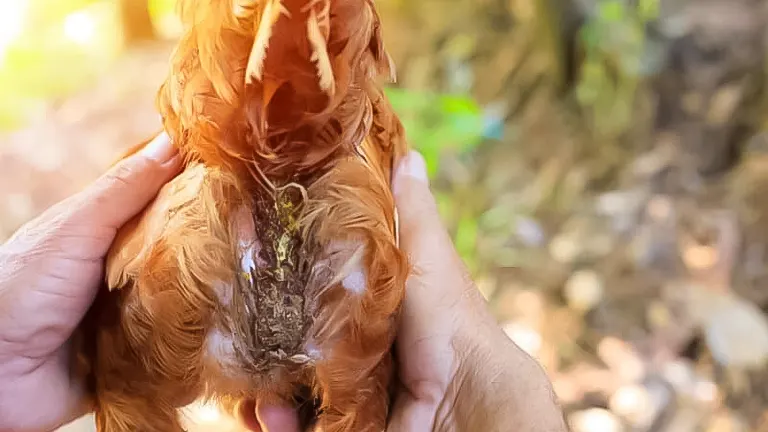
The mere mention of parasites like lice, fleas, or mites likely triggers an instinctive itch or discomfort, especially when considering the possibility of them infesting your home, family, or pets. However, it’s crucial to be aware that chickens are also susceptible to their own specific parasites, namely chicken mites and lice.
Among the myriad health concerns your chickens may face, an infestation of lice is notably troublesome to eliminate. It’s important to maintain strict biosecurity measures, even when acquiring new birds from reputable sources. Ensuring your chickens are pest-free before integrating them with your existing flock is essential. In this discussion, we’ll explore the various types of chicken mites and lice, identify symptoms of infestation to watch for in your flock, and address other common queries related to this issue.
List on How To Get Rid Of Mites In Chicken Coop:
Understanding the Variety of Chicken Mites
If the thought has ever crossed your mind, “Are there multiple types of mites that could infest my chickens?” you’re certainly not alone in this concern. Indeed, the world of chicken parasites is not limited to just one culprit; several types of chicken lice and mites are known to target poultry. Let’s delve into some of the most prevalent ones:
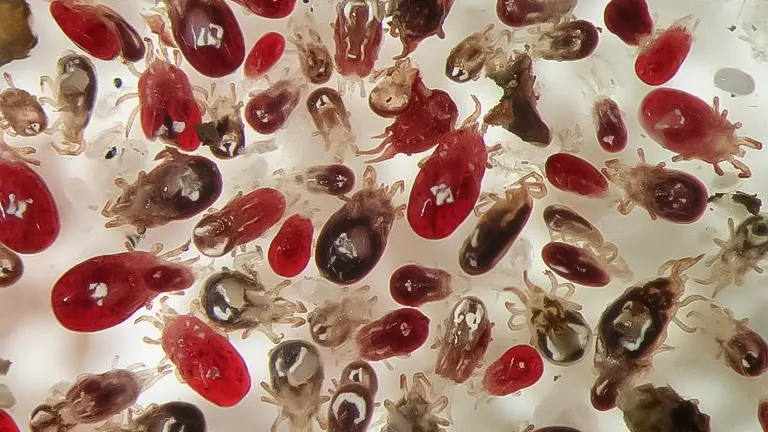
- Northern Fowl Mites: Topping the list of common poultry mites, Northern Fowl Mites present a significant challenge in early detection. A tell-tale sign of their presence is the appearance of white clusters of eggs along the feather shafts of your chickens. This indicates an infestation of Northern Fowl Mites.
- Red Roost Mites: Bearing similarities to the Northern Fowl Mite, Red Roost Mites distinguish themselves by their lifestyle. These ectoparasites, which live on the skin’s surface or within its layers, don’t spend their entire life cycle on the host. Red Roost Mites emerge primarily at night to feed on the birds, making them a nocturnal threat to your flock.
- Scaly Leg Mites: Should you notice your chicken’s legs appearing unusually scaly or crusty, it’s possible they’ve been afflicted by Scaly Leg Mites. These mites are imperceptible to the naked eye, as they burrow beneath the scales on the chicken’s legs and feet. They create tunnels and deposit feces, which results in the characteristic scaly appearance and potential infection.
While these are just a few examples of the pests that might plague your poultry, it’s comforting to know that chicken mites and lice typically do not pose a direct infestation risk to humans. Although chicken mites may bite humans when handling infested birds, they do not live on humans and will eventually return to the chickens. Nevertheless, precautionary measures should be taken during treatment to minimize contact and potential bites.
Understanding Chicken Lice Varieties
Navigating the world of poultry parasites can get a bit confusing, especially when distinguishing between chicken mites and lice. Though both are undoubtedly unwelcome guests in your coop, affecting the health of your birds, there are subtle differences between the two. Here’s an in-depth look at some of the most common types of chicken lice you might encounter:
Body Lice
Body lice in chickens, akin to mites, can be discovered by gently parting the bird’s feathers and inspecting for clusters of eggs at the base of the feathers. These lice prefer to inhabit areas with fewer feathers, such as around the vent, breast, and thighs of the chicken, making these spots their favored breeding grounds.
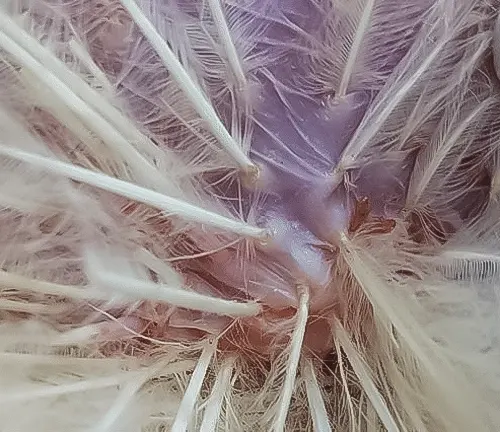
Shaft Lice
A bit smaller than their body lice counterparts, shaft lice lay their eggs not in clusters but individually along the feather’s shaft or barbs. Despite their small size, a careful examination of your birds will reveal their presence, as they are visible to the observant eye.
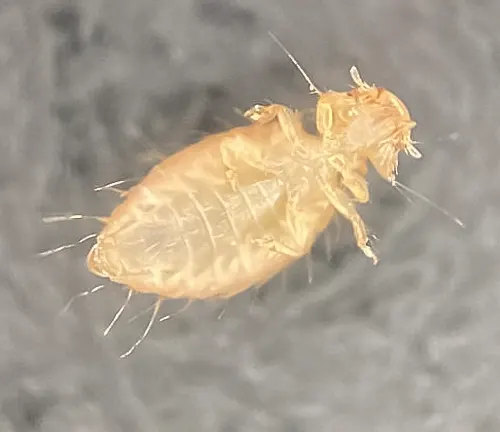
The distinction between chicken mites and lice might seem minor, but it’s crucial for effective treatment. The primary difference lies in their feeding habits: chicken lice feed on the dead skin and feather debris of your birds, whereas chicken mites are blood feeders. This knowledge is essential for identifying the type of pest you’re dealing with and for choosing the most effective treatment strategy.
5 Types of Natural Remedies for Mites and Lice in Chickens
Preventing mites and lice is essential, but treating infestations quickly is critical to stop them from spreading. Traditional treatments often use chemicals that can harm humans, chickens, and the environment. At Freedom Ranger Hatchery, we’re dedicated to eco-friendly and natural farming, so we suggest natural methods to manage chicken mites and lice, ensuring the health of our birds without relying on harmful chemicals.
1. Deep Cleaning
The cornerstone of my pest management strategy is a rigorous deep cleaning of the chicken coop. This involves stripping the coop of all bedding, meticulously scrubbing every surface with a bleach solution diluted to safe levels, and using a high-pressure hose to reach into every corner and crevice.
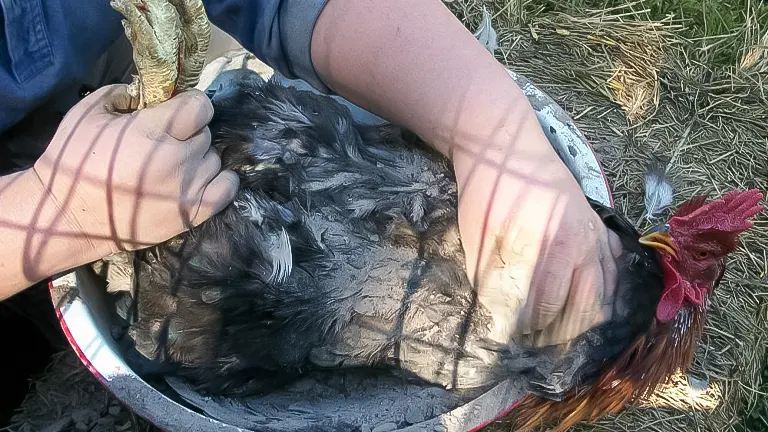
This method is undoubtedly labor-intensive, reflecting its effectiveness rating of 9 out of 10 for drastically reducing pest populations. However, its convenience score lags at 4 out of 10, due to the significant effort and time required. Although essential, deep cleaning alone isn’t sufficient to entirely eradicate pests, serving instead as a critical foundational step in a comprehensive pest control plan.
2. Diatomaceous Earth
Following the initial clean, I employ diatomaceous earth (DE), a powdery substance formed from the fossilized remains of tiny, aquatic organisms known as diatoms. This powder works by dehydrating and killing mites upon contact. Its non-toxic nature is a significant advantage, ensuring safety for both chickens and humans.

While not a complete solution on its own, DE has proven somewhat effective, meriting a 7 out of 10 effectiveness rating. Its convenience score is much higher, at 8 out of 10, thanks to its straightforward application process. This makes DE a valuable tool in ongoing pest management, albeit as part of a broader strategy.
3. Chemical Miticides
For more severe infestations, I’ve occasionally turned to chemical miticides. These products, specifically formulated to combat mites, offer high effectiveness, which I would rate at 9.5 out of 10. However, their use raises concerns regarding potential chemical exposure to the chickens and the surrounding environment.
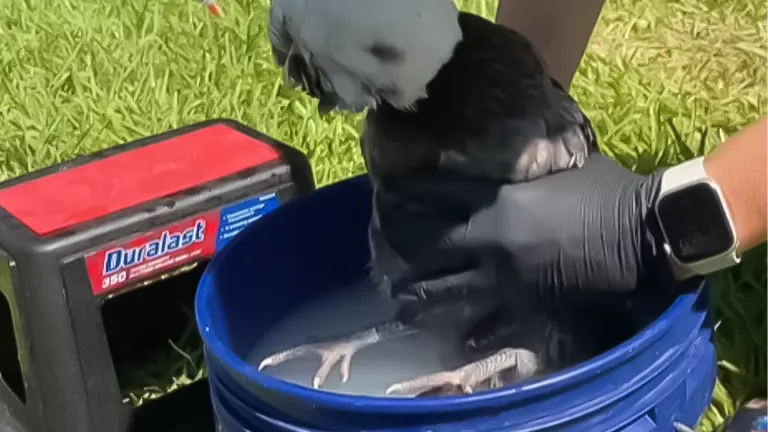
Consequently, I apply these treatments sparingly and with strict adherence to safety protocols. The convenience of using chemical miticides is moderate, rated at 7 out of 10, as their application can be more involved, sometimes necessitating protective gear.
4. Essential Oils
As a supplementary measure, I’ve integrated essential oils, such as lavender and peppermint, into the coop maintenance routine. These oils contribute a pleasant aroma and appear to mildly deter mites, although their effectiveness is relatively modest at 5 out of 10.

However, their ease of use is notable, scoring an 8 out of 10, particularly when these oils are mixed with bedding or diluted and sprayed around the coop. While not potent enough to rely on exclusively, essential oils serve as a gentle, complementary component of a holistic approach to pest management.
5. Garlic Juice
While the saying “garlic cures everything” might be an overstatement, incorporating garlic into your pest management strategy can be beneficial in controlling chicken lice and mites. Integrating garlic or garlic juice into the diet of your chickens can act as a deterrent to these parasites, as they are repelled by the altered taste of the chicken’s blood that garlic consumption produces.

Additionally, creating a solution consisting of water, garlic juice, and an essential oil (such as lavender) and applying it as a spray directly onto your chickens and their surrounding environment can further enhance its repellent effect. This method leverages garlic’s natural properties to create an unwelcoming environment for pests, contributing to a holistic approach to maintaining the health and comfort of your flock.
Lay A Solid Foundation For Your Flock
Ensuring your chickens’ health and happiness from the start requires a strong commitment to biosecurity practices. Adopting preventive measures, as previously outlined, is crucial in safeguarding your flock against potential mites or lice infestations down the line.
However, one of the most effective strategies for maintaining a healthy flock is sourcing any new additions from a reputable source. Opting for a trusted breeder, such as Freedom Ranger Hatchery, significantly minimizes the risk of bringing in birds that could introduce pests or diseases. Infestations can happen to anyone, but when you choose chickens from Freedom Ranger, you’re guaranteed to start with birds that are not only healthy but also raised with care. We invite you to get in touch with us to discover more about our commitment to poultry health and how we can contribute to the success and vitality of your flock.
Related Articles:
- Best Bedding For Chickens
- Best Safe Chicken Coop Heater
- 8×8 Chicken Coop Plans
- Turning a Shed Into a Chicken Coop
- How to Make a Chicken Coop Out of Pallets
- Best Sand for Chicken Coop
- How To Insulate a Chicken Coop
- How To Heat a Chicken Coop
- How To Keep Water from Freezing in Chicken Coop
- How to Build a Chicken Coop
- How To Build Chicken Nesting Boxes
- How to Raise Happy and Healthy Chickens in Your Backyard
- When Can Chicks Go Outside? Timing and Tips for a Smooth Transition
- 12 Reasons why Ducks are Better than Chickens
- Best Automatic Chicken Coop Doors 2024: Expert Reviews & Buyer’s Guide
- Best Fans for Chicken Coop 2024: Effective Cooling Solutions Reviewed
Recommendations
Based on my experience, the combination of deep cleaning and strategic use of both natural and chemical treatments is the most effective way to combat mites. This multifaceted approach addresses the issue from all angles, ensuring the health and happiness of your flock.
For those looking for the single best method, I’d recommend starting with diatomaceous earth for its balance of safety, convenience, and effectiveness. However, be prepared to escalate your efforts if the situation demands.
Final Thoughts
Dealing with mites is undoubtedly challenging, but with the right knowledge and tools, it’s a manageable problem. Remember, prevention is always better than cure, so regular coop maintenance and vigilance are key. I hope my journey and insights help you keep your coop mite-free and your chickens healthy and thriving.
Frequently Asked Questions
- What are the signs of a mite infestation in a chicken coop?
Look for excessive scratching, feather loss, and visible mites or eggs on the chickens or in the coop. Mites are tiny, so you may need a magnifying glass. - Can mites from chickens affect humans?
While chicken mites prefer avian hosts, some can bite humans, causing irritation and itchiness. However, they do not live on humans. - How often should I clean my chicken coop to prevent mites?
Perform a deep clean at least twice a year, but regular weekly maintenance (removing waste and changing bedding) can help prevent infestations. - What natural remedies can I use to treat mites?
Diatomaceous earth, garlic juice, and essential oils like lavender or peppermint are effective natural remedies that can deter mites. - Can I use chemical pesticides in my chicken coop?
Yes, but choose pesticides approved for poultry use to avoid harming your chickens. Always follow the product instructions carefully. - How do I apply diatomaceous earth in my coop?
Sprinkle a fine layer of food-grade diatomaceous earth on the coop’s floor, nesting boxes, and perches. Avoid creating dust clouds to prevent respiratory issues in chickens. - What should I do if my chickens have mites?
Isolate infested chickens, treat them with an approved miticide or natural remedy, and thoroughly clean the coop to eliminate mites and their eggs. - Can mites live in the coop without chickens?
Yes, mites can survive for several weeks without feeding on chickens, hiding in cracks and crevices of the coop, waiting for a new host. - How can I prevent mites from returning?
Maintain cleanliness, apply natural deterrents regularly, and check your chickens frequently for early signs of mites to prevent re-infestation. - Are there any coop design features that can help prevent mites?
Yes, designing a coop with fewer crevices and using materials like metal or smooth wood can help reduce mite hiding spots. Ensure good ventilation and consider removable roosts and nesting boxes for easier cleaning.
We’re keen to hear about your encounters! Have you faced off against mites in your chicken coop? Please share your strategies and experiences in the comments section below. Your hands-on advice and knowledge could be crucial for fellow poultry enthusiasts seeking efficient ways to tackle this common issue. Dive into the discussion and assist others in making well-informed decisions to combat mites in their coops!

Edward Smith
Forestry AuthorWoodworking is about more than crafting; it's a harmonious connection with nature, mastering tools, and preserving our environment. I'm here to share my knowledge and experiences with you, forging a future where we can embrace wood's beauty and utility while safeguarding our forests' health and diversity.







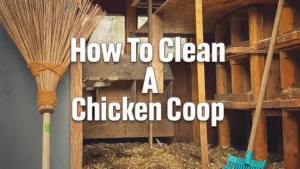
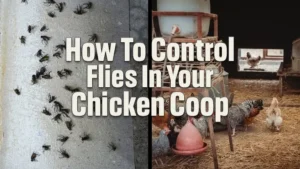

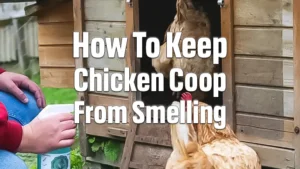


Leave your comment